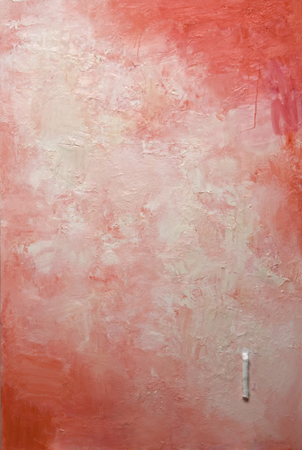What do you do with the elephant in the room? Do you feed it? Nourish it in other ways? Try to talk it down off the wall? Coax it into a deeper relation with furniture and family? You don’t ignore it, that’s for sure. You wouldn’t want it there in the first place if you could simply ignore it.
 In this case the “Elephant,” left, and a rather pinkish one to boot, is one of Molly Vidor’s five mostly abstract paintings in a show called “Destroyer†now at PDX Contemporary Art (February 5 – March 1, 2008). “Destroyer†is a curious title for the show given the peaceful, reflective nature of the paintings and the fact that in her artist’s statement Vidor correlates her work with that of Pierre Bonnard, who made the most beautiful paintings I’ve ever seen – landscapes, still lifes, and nude portraits of his wife.
In this case the “Elephant,” left, and a rather pinkish one to boot, is one of Molly Vidor’s five mostly abstract paintings in a show called “Destroyer†now at PDX Contemporary Art (February 5 – March 1, 2008). “Destroyer†is a curious title for the show given the peaceful, reflective nature of the paintings and the fact that in her artist’s statement Vidor correlates her work with that of Pierre Bonnard, who made the most beautiful paintings I’ve ever seen – landscapes, still lifes, and nude portraits of his wife.
But he didn’t paint one abstract that I can recall, although he eschewed naturalistic color and flattened perspective in a way that makes the composition seem like a patchwork of colors. He wanted his work to be intimate and decorative at once. The Phillips Collection in Washington, D.C., has an amazing number of Bonnards, and they have such presence that they create their own space in the narrow confines of the converted residence where they are housed.
I have a theory about why and how Vidor’s shimmering paintings echo Bonnard’s, but it follows from my broader theory that we enter into deeper relations with abstract paintings – or, rather, the abstract quality in painting – than we do with landscapes, or still lifes, or figurative work.
Continue reading Molly Vidor and the Elephant in Bonnard’s Garden